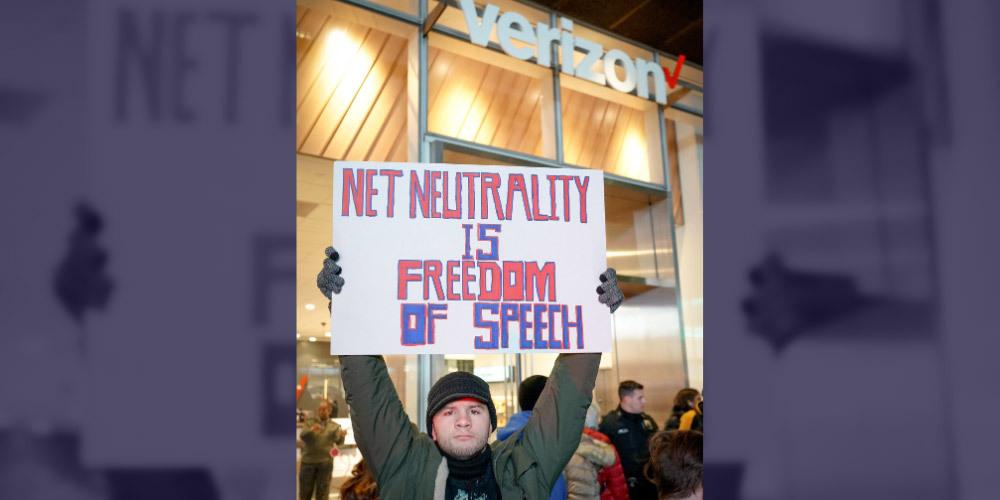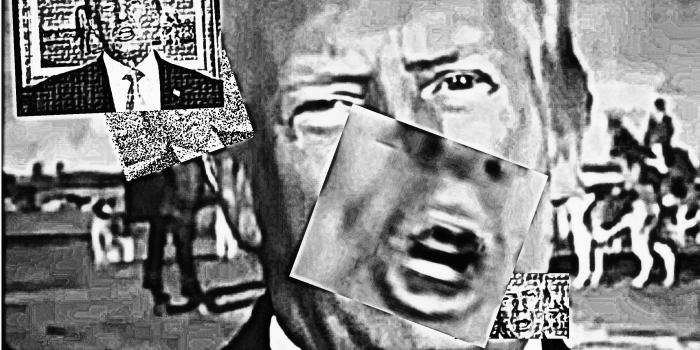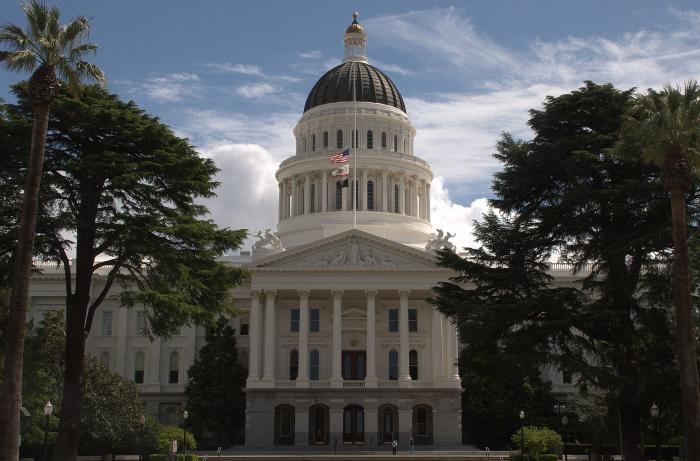Some Net Neutrality Advocates Claim the FCC's New Rules Are Weak. They're Wrong

On April 25, the Federal Communications Commission will vote to restore its authority over broadband internet-access services. This is a huge victory.
With its proposed order putting broadband back into a regulatory category for ”telecommunications services” under Title II of the Communications Act, the agency will once again have the power to make internet access more resilient and reliable during emergencies and pandemics. It will be able to make internet service more competitive and affordable — and to prohibit any unjust and unreasonable practices ISPs like Comcast might try.
And the FCC will have the power to prevent discriminatory practices from these providers.
That ban on “unjust or unreasonable discrimination” comes straight from Section 202(a) in Title II. This language is the foundation for Net Neutrality rules, which categorically prohibit some practices that undermine competition and harm consumers. Title II also gives the agency the power to go further: to investigate and take action against practices that are harmful even if they’re not encompassed by bright-line bans on ISPs blocking apps or websites, throttling their speeds, or demanding pay from them in exchange for priority treatment.
It’s taken us more than three years into the Biden administration to get to this point, a delay resulting from the long wait to seat a fifth commissioner who can be a deciding vote on this five-person commission.
We should be celebrating this gigantic win to undo the Trump FCC’s abdication of its authority to make sure internet access works for everyone.
Yet in the run-up to the FCC’s final vote, there’s been a note of worry in the chorus praising the FCC for its plans. Some academics and advocates have suggested that the proposed rules are actually weaker than the Obama-era protections that Trump FCC Chairman Ajit Pai jettisoned. This is a false alarm.
The rules are the same or stronger
The rules up for a vote at the FCC on April 25 are identical to the 2015 rules. The FCC can and will enforce them in the same way. And the draft order text that the Commission will finalize and adopt already makes this clear — in some cases, going further than the 2015 order did — with a chance before the vote occurs for the agency to make this language even stronger.
This doesn’t mean that the new rules are perfect, or as comprehensive as they could be in theory. Free Press filed a letter with the agency describing ways regulators could improve the order to make even clearer what the rules already say. But they are just as good and strong as their 2015 predecessor.
Let’s take a look at three different claims that FCC Chairwoman Jessica Rosenworcel’s proposal is somehow deficient — and explain why the rules and the framework are in fact just as strong as ever.
The “reasonable network management” exception: same as it ever was
One of the seeds of the mistaken belief that the new rules are weaker than the old ones is an FCC filing that Stanford Law Professor Barbara van Schewick made on March 12, 2024. She is an incredible scholar and expert on this topic, and a longtime ally on Net Neutrality. But her March filing made two key mistakes in its critique of the “reasonable network management” exception to the blocking and throttling prohibitions.
Her filing suggested that “the FCC needs to restore the 2015 requirement that network management be primarily technically justified,” implying that ISP lobbying had changed this key definition in the rules. Keeping this wording in the definition matters, because we don’t want broadband providers pretending that their money-making schemes are justifiable technical practices needed to manage their networks. But the proposal the FCC released in October and the final draft order it circulated earlier this month both contained the exact same “primarily technical” language as the 2015 rules did.
Does this mistake matter? Yes, because it has fed the claim that the 2024 proposal is “weaker” than the 2015 rules, or riddled with “loopholes.” But again, the text is identical to the 2015 rules. There are no loopholes.
The second mistake with respect to this “reasonable network management” exception in the March 12 filing was a claim that the restored FCC rule “needs to include the 2015 requirement that network management must be ‘as application-agnostic as possible.’” Application agnosticism means that ISPs shouldn’t make network congestion-management decisions based on the content or source of the traffic; instead, home internet users should get to decide how to use the bandwidth they buy.
This is an important consideration. The 2015 Open Internet Order discussed it in detail and cited it as a very important indication of reasonableness. But there was no requirement of this sort in the 2015 rules.
Subsequent filings written by Professor van Schewick and one also signed by a small contingent of important public-interest groups corrected this erroneous claim. Yet the mistaken impression persists that somehow the current FCC had proposed to change the rules on the books when it did no such thing.
State Net Neutrality laws: preserved by the FCC’s proposed order
Unlike the FCC rules, the California Net Neutrality law passed in 2018 does include language about network-management practices being “as application agnostic as possible.”
The way that California law is written still establishes a standard that not only allows for adjudication but essentially requires it. That state law itself doesn’t determine what’s “possible.” It merely says that ISPs have to strive to be application agnostic, and enforcers will measure their claims against that yardstick.
The language in the California law is just one of many reasons that advocates have called for the FCC to refrain from preempting California’s Net Neutrality law, which sprang up to fill the void created when the Trump FCC repealed the federal rules.
While California’s law helped preserve the baseline of Net Neutrality when the FCC abandoned it — a move all consumers should be grateful for — it’s simply untrue to say that this law is stronger than either the FCC’s 2015 order or its newly proposed one. That’s because Title II is not only about Net Neutrality. Comparing the two efforts isn’t exactly like comparing apples and oranges, but it’s like comparing one particularly good apple against a whole bushel of them and saying that we should only care about a single Golden (State) Delicious.
As Chairwoman Rosenworcel and others have pointed out, restoring Title II is absolutely essential because — as the pandemic has shown — internet access is a necessity. We need the expert federal agency in this field to exercise its power to promote universal broadband adoption and choice — and to protect people against ISP abuses of all sorts, not just Net Neutrality violations.
Yet on the topic of Net Neutrality and state laws, the proposed FCC order does all that it can to uphold those state regimes. The agency’s draft even specifically says that California’s law today is consistent and compatible with the restored federal framework, and thus “unlikely to interfere with or frustrate those federal rules.” What the FCC’s order text does not and cannot do is foreclose any and every possible challenge from ISPs or other interested parties claiming that there might in the future be a conflict between the two.
Our friends at the Electronic Frontier Foundation are claiming that the FCC’s language here “sets a low bar” for future preemption inquiries, and that the agency should instead assert that further state protections could never be inconsistent. That’s not a legal determination that a federal agency can make on its own — as we know from the Trump FCC’s sweeping but failed attempt at preemption when it repealed the federal rules in 2017.
Conflict preemption is a constitutional and judicial question about federalism, not something an agency can dictate. Quoting earlier precedent, the D.C. Circuit Court of Appeals judges reviewing the Trump repeal decision explained clearly that conflict preemption “involves fact-intensive inquiries [and] mandates deferral of review until an actual preemption of a specific state regulation occurs.” That’s why the court has “long recognized that whether a state regulation unavoidably conflicts with national interests is an issue incapable of resolution in the abstract, let alone in gross.”
So the FCC can say — and did say! — that it doesn’t see any conflict with California on the record today. Any larger promise that there could never be a conflict — even as the federal and state rules may change and be enforced in the future — would be a fruitless exercise and empty talk.
Fast lanes: false assumptions and failed advocacy
The primary concern among those wringing their hands over the new FCC rules seems to boil down to arguments about “speeding up” some websites, apps or classes of those — which would inevitably and effectively result in slowing down other apps, services and sites that aren’t getting this favored treatment.
As I noted above, Free Press filed separately to join in the call for the agency to clarify the application of its “no throttling” rule under these circumstances, and the draft order did that — though apparently in a way that some advocates worry made it worse. These concerns are overblown.
Luckily for all of us, there is no loophole — and certainly no change in the current draft rules from the ones the Obama FCC successfully adopted and defended in court in 2015.
The 2015 FCC version of the “no throttling” rule says this and only this: A broadband provider “shall not impair or degrade lawful Internet traffic on the basis of Internet content, application, or service, or use of a non-harmful device, subject to reasonable network management.” The new proposal that’s up for a vote on April 25 repeats that rule, verbatim. So how can it be weaker?
It’s true that California’s law specifically defines throttling as “differentiating” either “positively or negatively” among different content, applications, websites or classes of them. Other failed Net Neutrality bills at the federal level say more plainly that throttling means slowing down disfavored apps or speeding up favored ones. That’s fine, and a good idea to clarify, as Free Press has asked the agency to do.
While the FCC declined to depart from and modify the 2015 rules’ text in this fashion, it did clarify that it understands that a broadband provider’s “decision to speed up specific content, applications, or services could ‘impair or degrade’ other content, applications, or services not given the same treatment.”
It’s the word “could” that’s at issue now. It would be a clearer statement for the FCC to determine that “speeding up” is always problematic instead of leaving every such determination to a case-by-case inquiry — and to determine that such conduct along these precise lines would be unreasonably discriminatory under the FCC’s bright-line throttling ban.
Yet even with a clearer statement that these schemes would violate the rule, there are exceptions and qualifications: This bright-line throttling ban has always been subject to reasonable network-management exemptions (at the FCC and in California, too) that ISPs can argue are necessary. A bright-line ban on certain behavior certainly sends a clearer signal to the industry, but it’s not self-executing. Conduct always has to be measured, litigated and weighed against that ban. And most important of all, even if the FCC sticks with “could” instead of “would,” the agency has clear authority and tremendous power under Title II to prohibit any harmful conduct whether or not it fits under a bright-line rule.
In fact, that’s exactly why Net Neutrality advocates uniformly opposed many of the bills emanating from Republican members of Congress who promised to enshrine the bright-line rules in statute without restoring Title II. Their target was stripping the FCC of the power and discretion to go further based on the facts before it. But the ability to stay agile and respond to previously unimagined ISP schemes is one of the most important things Title II provides and that the Biden FCC’s new order would preserve.
Why do any advocates claim that the new throttling rule is weaker than the 2015 rule when the rule text is identical? The March 12 filing mentioned here previously claimed there was language in the 2015 order about the ills of selectively speeding up some sites, but that “fast lanes” language was about the ban on paid prioritization — not the throttling rule.
There is concern that ISPs will attempt to evade Net Neutrality by casting discriminatory offerings as what used to be called “specialized services” that are outside of the Commission’s rules. The draft order makes a clear and compelling statement that it wouldn’t tolerate such behavior. But intent on finding a cloud behind every silver lining, some of the same advocates have seized on this strengthened non-evasion paragraph to suggest that its focus on paid-prioritization schemes somehow blesses the idea of fast lanes that home internet users (as opposed to Netflix and other applications) might pay for. That blessing claim is not a fair assumption, however, and it’s not sound logic or legal reasoning.
All in all, the new order is stronger and more explicit on this positive throttling question. Then-FCC Commissioner Mignon Clyburn’s supporting statement for the vote in 2015 merely cited the harms of “fast lanes” without saying more. Then-Commissioner Rosenworcel said the exact same thing. And if we’re going to look for legal meaning in commissioners’ separate statements, then-Chairman Tom Wheeler’s statement in 2015 also squarely situated the fast-lanes problem in the paid-prioritization ban, not throttling. He said that the Open Internet Order then would “Ban Paid Prioritization: ‘Fast lanes’ will not divide the Internet into ‘haves’ and ‘have-nots.’”
What we’re left with at this point are claims that advocates thought that the no-throttling rule was different in 2015. But it wasn’t.
This has been typical of this entire half-year of advocacy at the FCC on this topic. This whole proceeding has tested my faith in the axiom “you never forget how to ride a bike.” Many great friends and allies are pedaling furiously right now and getting nowhere.
It’s not just bad strategy to charge into the room conceding defeat if you don’t get the small changes you seek; it’s simply not true in this case that the FCC would be powerless to stop fast lanes and other ISP misdeeds. Title II, and the general conduct standard in the Net Neutrality rules modeled on it, ensure the agency’s authority to protect people online.
The April 25 vote should give consumer advocates a sense of excitement and accomplishment — not lead them to claim hyperbolically that the FCC or its new order are failing to live up to the prior standard.
The FCC’s draft order is essentially identical to the 2015 framework the Trump FCC tossed out. That’s especially true on these points of contention, even where the arguments are based on truly valid policy concerns. And it’d be great to spend the next week and the months to come defending that achievement against the actual attacks it will face — from industry and in Congress, the courts and the next presidential administration if the White House changes hands — instead of responding to these friendly-fire concerns.





